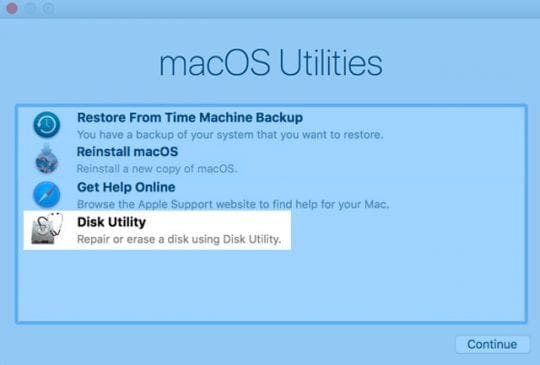

- #HOW TO GO TO RECOVERY OS MAC SIERRA HOW TO#
- #HOW TO GO TO RECOVERY OS MAC SIERRA MAC OS#
- #HOW TO GO TO RECOVERY OS MAC SIERRA INSTALL#
- #HOW TO GO TO RECOVERY OS MAC SIERRA PRO#
- #HOW TO GO TO RECOVERY OS MAC SIERRA SOFTWARE#
#HOW TO GO TO RECOVERY OS MAC SIERRA HOW TO#
However, if you have no Time Machine backup, how to downgrade macOS? Then, your Mac mini or another model will automatically restart running macOS Catalina or the other macOS you've rolled back. You can watch TV till the process is done. The restoring process will take some time. Click Restore to retrieve the backup (including the macOS you want to downgrade to and your personal data).Choose the destination (typically your Mac's internal hard drive) to save your Time Machine backup.Select the backup disk and click Continue.Select Restore From Time Machine Backup in the macOS Utilities screen and click Continue.Usually, the startup volume erasure task should be taken in macOS Recovery mode. Sluggish performance of your Mac after macOS reversion.If you don't wipe the Mac hard drive, you'll face issues like: Why? Because erasing your Mac hard drive is to make room for the older macOS you'll install. Erase your Mac (Necessary)Īfter you've backed up your Mac, it's time to wipe all data on your Mac hard drive. Or write down all the accounts and corresponding passwords. To save your passwords, you can check in Keychain in iCloud when using it to back up data.



Notably, macOS reversion will also erase all the passwords you used in the current OS, like passwords for apps and networks. Or, you can back up your Mac files with Time Machine for restoring after rollback the macOS update. If you want to back up all data on your Mac, you can synchronize it to your iCloud if there's enough storage space. If you only have a few files, copy them to an external drive as a backup. Thus, you need to back up your Mac in advance. The macOS downgrading process will erase all data on your Mac. If you regretted upgrading macOS because of its massive changes and frustrating issues, uninstalling macOS will eliminate your annoyance and bring you a fluency experience.
#HOW TO GO TO RECOVERY OS MAC SIERRA SOFTWARE#
Moreover, you also have to accept the macOS 11 Big Sur updates issues or the new macOS Monterey problems like software incompatibility and Finder springs back horizontal scrolling. Upgrading to the latest macOS Big Sur requires you to adapt its new features and redesigned look.
#HOW TO GO TO RECOVERY OS MAC SIERRA MAC OS#
Restore your data after downgrading Mac OS Downgrade Mac OS with a bootable installer Downgrade Mac OS with a Time Machine backup Here's how to downgrade macOS Monterey, Big Sur, or earlier version: The ways in this article are suitable for downgrading from Big Sur to Catalia, from Monterey to Big Sur, or an older version of macOS. This article gives you three ways to downgrade Mac OS without data loss, even if you don't have a time machine backup. I’d suggest reading that one until your eyes bleed.You may have the question: "Can I downgrade my macOS version?". If you’re selling or giving away a Mac that is using OS X El Capitan or earlier, use Command-R to make sure that the installation isn’t associated with your Apple ID.Īpple actually has an entire article on what to do before selling or giving away your Mac as well, so if that’s your situation, go and read it. Oh, and if you are wiping your Mac for sale, be aware of something else Apple says in the article I linked above:
#HOW TO GO TO RECOVERY OS MAC SIERRA INSTALL#
Obviously, this would be most useful if you were intending to just install the operating system before selling your computer you can’t put Yosemite, say, over an existing High Sierra install (or any version that came later than Yosemite) without erasing the Mac’s drive first.
#HOW TO GO TO RECOVERY OS MAC SIERRA PRO#
Shift-Option-Command-R (for Macs upgraded to 10.12.4 and later) or Option-Command-R (for all other Macs): Installs the version of macOS that came with your computer or the closest available version.įor example, my computer is an early 2015 MacBook Pro running 10.13.3, and when I hold down Shift-Option-Command-R at startup and pick “Reinstall macOS” afterward, the machine offers to install Yosemite for me.


 0 kommentar(er)
0 kommentar(er)
